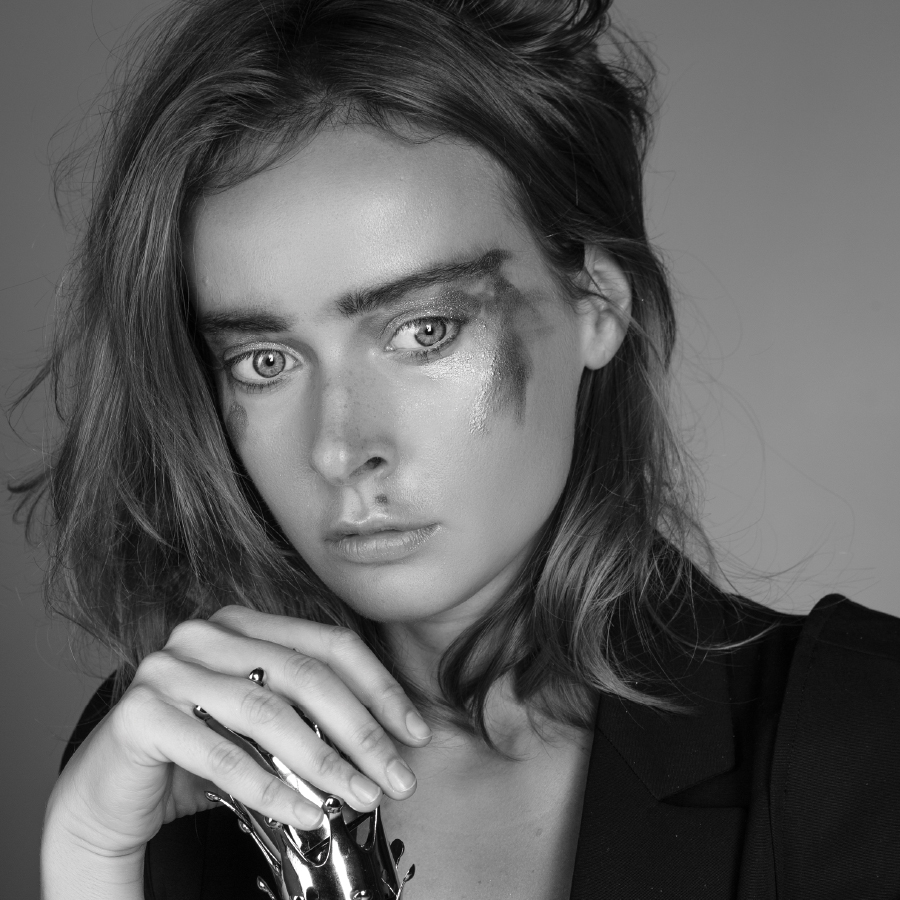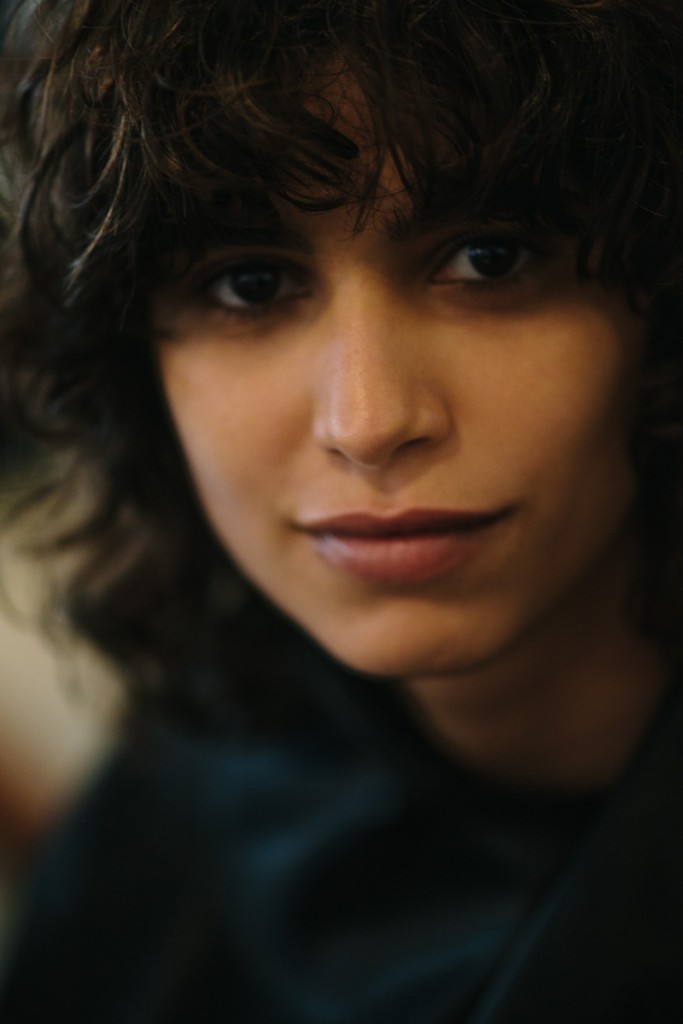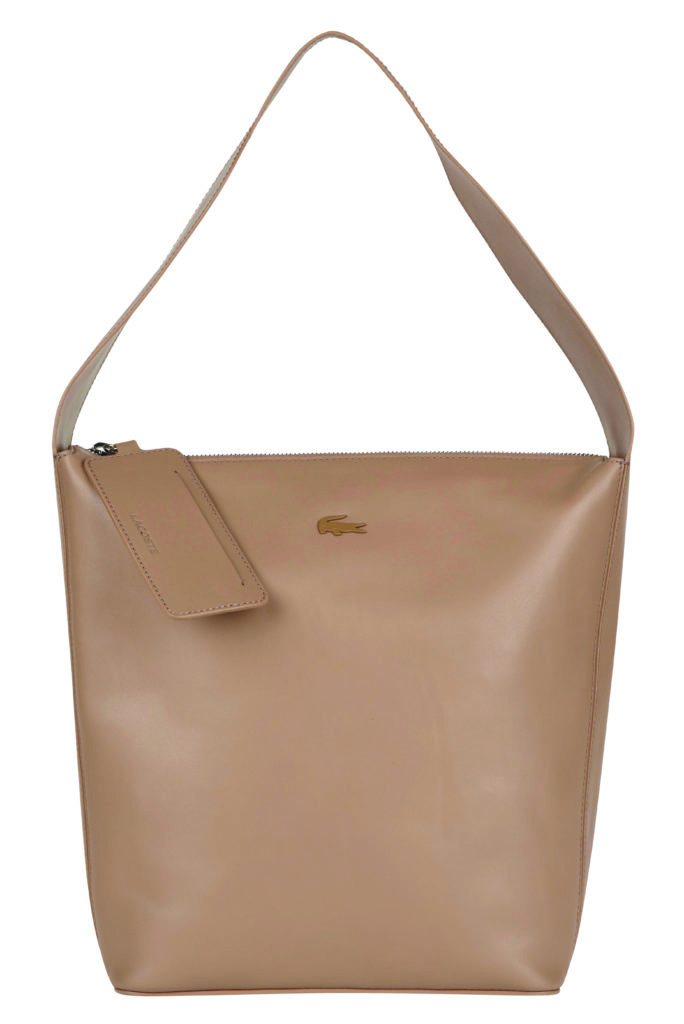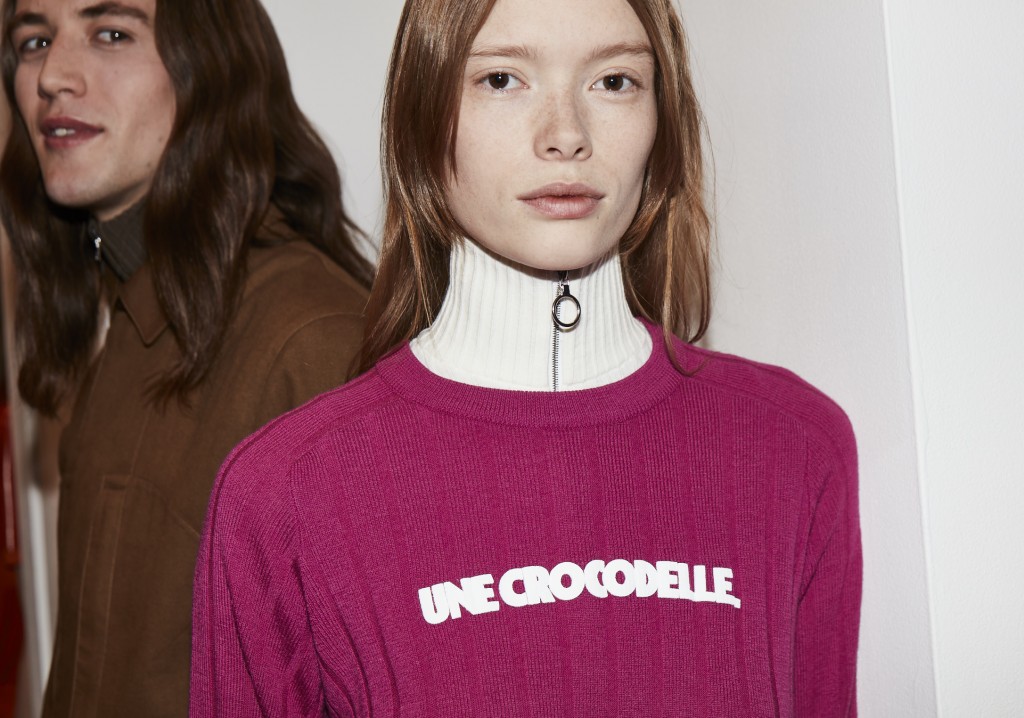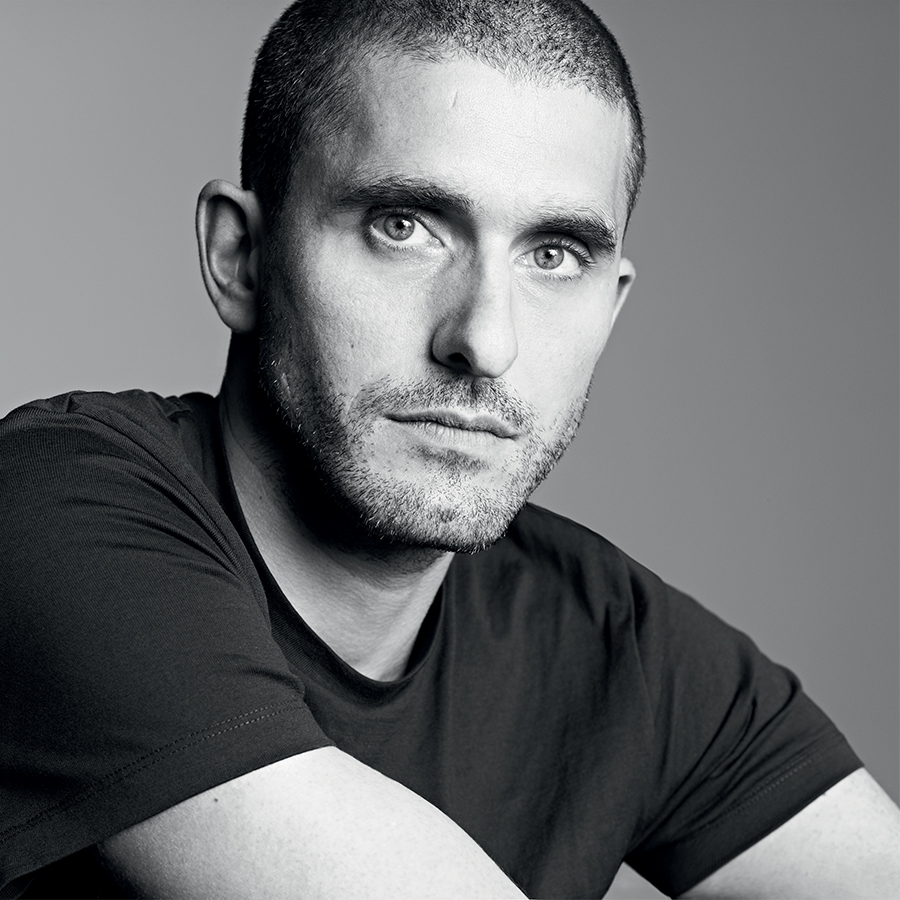
FELIPE OLIVEIRA BAPTISTA ON HERITAGE
By Crash redaction
FELIPE OLIVEIRA BAPTISTA INTERVIEW ON HERITAGE: BORN IN PORTUGAL IN 1975, THE DESIGNER CUT HIS TEETH AT CHRISTOPHE LEMAIRE, MAXMARA AND CERRUTI BEFORE LAUNCHING HIS OWN BRAND. KNOWN THROUGHOUT THE INDUSTRY AS ONE OF THE MOST TALENTED DESIGNERS OF HIS GENERATION, HE WON THE GRAND PRIX AT THE 2002 HYERES FESTIVAL FOR A COLLECTION HE CREATED WITH HIS WIFE AND MUSE, SEVERINE. LACOSTE LATER TIPPED HIM AS ITS NEW CREATIVE DIRECTOR IN 2010. CURRENTLY LIVING IN PARIS, FELIPE OLIVEIRA BAPTISTA NOW WORKS EXCLUSIVELY TO PROMOTE THE LACOSTE HERITAGE, FROM DESIGNING ITS COLLECTIONS TO DEVELOPING ITS BRAND.
Interview by Armelle Leturcq
How many collections have you worked on at Lacoste?
I started in 2010 and my first collection was for spring/summer 2012. This season will be my eighth. It already feels like I’ve been here forever, but four years is not a long time, in fact. When I started out I worked at Christophe Lemaire, Cerruti and other places. Afterwards I created my own brand. I kept working on it for three years after I started at Lacoste, but then I stopped.
Was it a dream of yours to be the creative director of a major house like Lacoste?
That was never my goal. What I liked best of all was having fun with my own brand. When Lacoste approached me, one of my first reflexes was to ask if it was full time since I didn’t plan to give up my brand. Working at Lacoste is interesting for me because things are both very different and also complementary to my work. It’s nice working for a company with resources, too. Things move more quickly and we can do more with details, colors and materials. No matter what idea I have, I know we’ll be able to do it.
What is your background?
I studied fashion design for four years at Kingston University in London.
A lot of creative directors today have no technical training, such as Hedi Slimane, who studied art history, and Tom Ford, for example.
You have to consider where they came from and who they knew. In many cases fashion runs in their blood and they are able to translate that into their work.
How did you manage to run your own brand while also working at Lacoste? Is it possible to run two houses at once?
I don’t think so, and that’s why I stopped! For me it’s all the demands on your personal life that are too tough to manage. At first it was a real thrill to do everything at once. But after two and a half years, I started feeling a sort of creative fatigue. I think it’s important to allow yourself enough time to digest your ideas, take a step back and also have a personal life! It’s too easy for quality to decline when designers start working too much. I love working with a team, and the Lacoste team is incredible. I like dialogue and hearing new ideas. It’s an interesting process. But it’s important to keep a certain distance there, as well. I have to take time to travel and have new experiences. I always give myself a few off days to go see exhibitions, galleries, the flea market, etc. I try to find inspiration in things outside fashion, things that are more personal.
Nowadays a lot of people find inspiration in the past, notably in the 1960s. We don’t see anything like that in your work.
No, looking back is not something I typically like to do. And if I do, it’s only in order to get a better vision of the future. I’m somewhat reticent about referencing past eras and styles. I don’t want to copy anything. Every era is distinct. It’s dangerous to reference the past with a brand like Lacoste since it has over eighty years behind it. You have to use the past, but you have to do it with extreme moderation.
Speaking of Lacoste’s history, it’s fascinating to see how natural Lacoste’s style was in the 1930s. Even though it’s functional apparel, people had so much class. It’s amazing to see how they combined these two elements. No one at the ski lodge today is as chic as they were back then!
It’s true! And the Lacoste family is also very welcoming. Catherine Lacoste, a daughter of René Lacoste, invited me into her home and showed me the family archives. It’s incredibly rewarding to be part of a fashion house with so much history. All my work is intended to preserve and promote this heritage. René Lacoste was not only a great athlete, he was also an inventor.
Has your work changed since the Lacoste family sold the company?
My process is a bit simpler now. I liked having the family around. I still see some of them and they tell me what they think of the collections. Their spirit is still there. It’s a question of heritage, and there is a lot of mutual esteem between us.
Was there anything you knew you wanted to change when you arrived at the house?
From the very beginning, I was asked to focus on women. My mission was to expand the collection to include items women can wear during the week, and not just for sports or leisure on the weekend. I also wanted to give a boost to the technical side of our clothes, since that’s part of the René Lacoste DNA. New design techniques like these are the most interesting aspect of today’s fashion. So I tried to make some progress on those two fronts. Once again, the goal is to preserve Lacoste’s continuity. Lacoste hasn’t seen any major reboots because it has a clear set of codes and principles. The goal today is to reinterpret these codes.
You do a lot of research before designing a collection, notably into materials.
That’s true. We also use our runway line as a laboratory to test all the ideas we will later adapt for our retail lines. I think it’s interesting to combine fashion and sports, especially through materials. There is a lot of demand for comfort in today’s apparel market. That’s a huge opportunity for a brand like Lacoste, since it offers a hybrid blend of fashion and athletic wear.
How many lines do you do?
From top down, we have our runway collection, then our mens and womens sportswear collections, and our sports lines which include tennis, golf and lifestyle. We also have a younger line called Lacoste L!ve and our kids line. A few years ago we launched an activewear line, but those items are now part of our lifestyle line.
Do you work on any of the sneakers?
We handle everything related to clothing. For leather goods we just provide our guidelines and final approval. For runway shows, I design everything including the shoes and bags, which later find their way into our retail collections. Everything else is done through licensing, so we have to work hard to make sure everything is consistent. We actually sell ten million pairs of sneakers a year! We don’t publicize that fact much, though.
You are also in charge of Lacoste’s brand management.
Yes, we work with BETC. I play a fairly direct role in those activities. I attend shoots and castings, choose photographers and pick locations. It’s all very interesting for me. It’s a bit like an extension of the runway show. The task is to find the best way to promote our brand. It’s much more complex than putting together a collection. It’s also the kind of work you do as a team. I actually got interested in fashion through images. At first I wanted to study photography but my parents wanted me to stay in Lisbon a bit longer. Since there were no photography schools in Lisbon, I told them I wanted to do fashion! I did some photography in school and on my own, but I wasn’t interested in doing fashion photography, even though I like to see it and take part in it. Fashion photography depends on subtlety. It’s all in the details.
I think Instagram is handy in that regard, because it works like an image bank and helps you see new things or make new connections. That’s what makes it interesting.
What’s interesting about Instagram is all the different ways it can be used. Certain accounts offer some great points of view. There is the mainstream way to use Instagram, by following celebrities, for example. But you can also filter your stream and pick the kinds of content you want to see. It has a kind of purity about it. Instagram also connects you with people who like the same posts as you. I’ve met some truly interesting people through Instagram. In a way, it’s images and perception that offer us new and artistically interesting encounters.
What role do new technologies play in your work?
We develop all our prints and colors digitally now. Our designers also work on computers. For me, I decided not to have a computer in the studio. When I relocated my office here, I let them know I didn’t want a traditional office at all, but just a big work table to be able to interact with everyone. It’s a lot better because it’s easy to fall slave to computers and email!
Since you also do photography, would you ever want to photograph the Lacoste campaigns yourself?
I’m not really interested in doing photography for fashion campaigns. But I do want to do something with my photography. I also do a lot of drawing. I want to do a few personal projects and I already have some ideas. I want to work on projects that don’t have tight deadlines, something more long-term. I like using my camera to record ideas and moments of life. I’ve always used photography as a form of research, like drawing. I got my first camera at twelve and it helped sharpen my eye. My vision is not just driven by fashion alone. But I need to think hard about the direction I want to take these projects in, because exhibiting your photography or drawings is always tricky, intimate and two-sided. It’s difficult to make the leap.
Especially when you are already the creative director of a major house. You have to fight against bias and preconceptions.
It’s true. I first got into to it by chance, mainly because fashion was related to all the activities I liked: architecture, sculpture, images, performance. A lot of people see it as frivolous, but fashion is closely connected to every form of art, and that’s what I’ve always liked about it.
Interview from Crash #71






